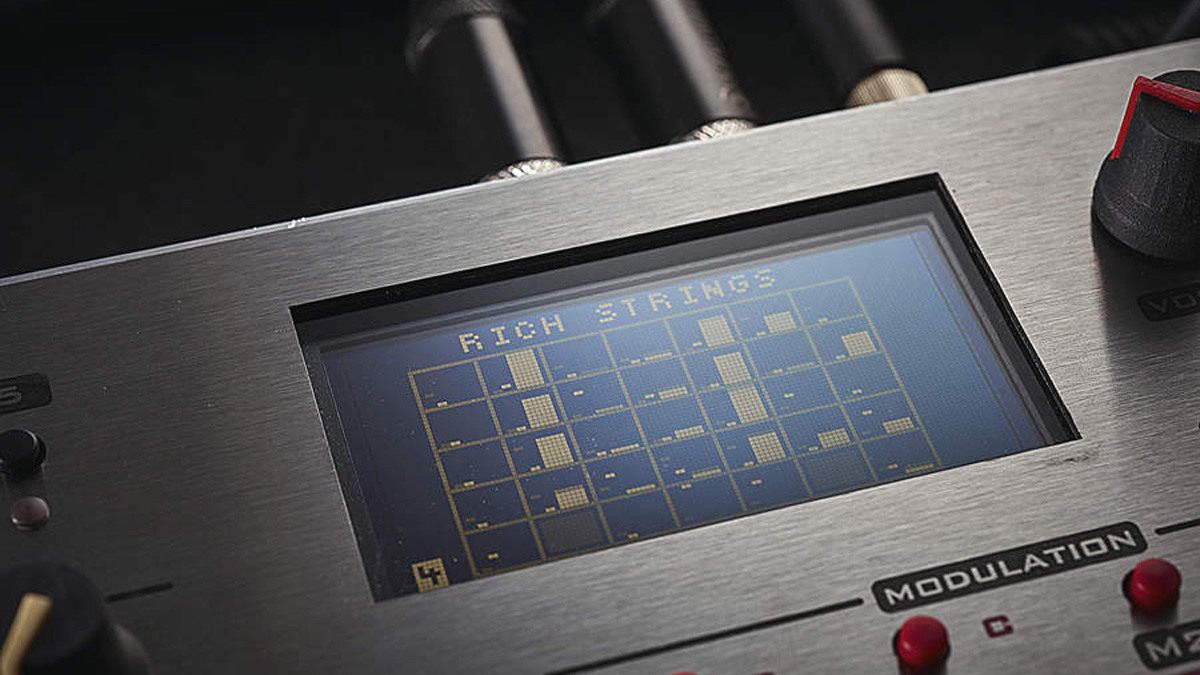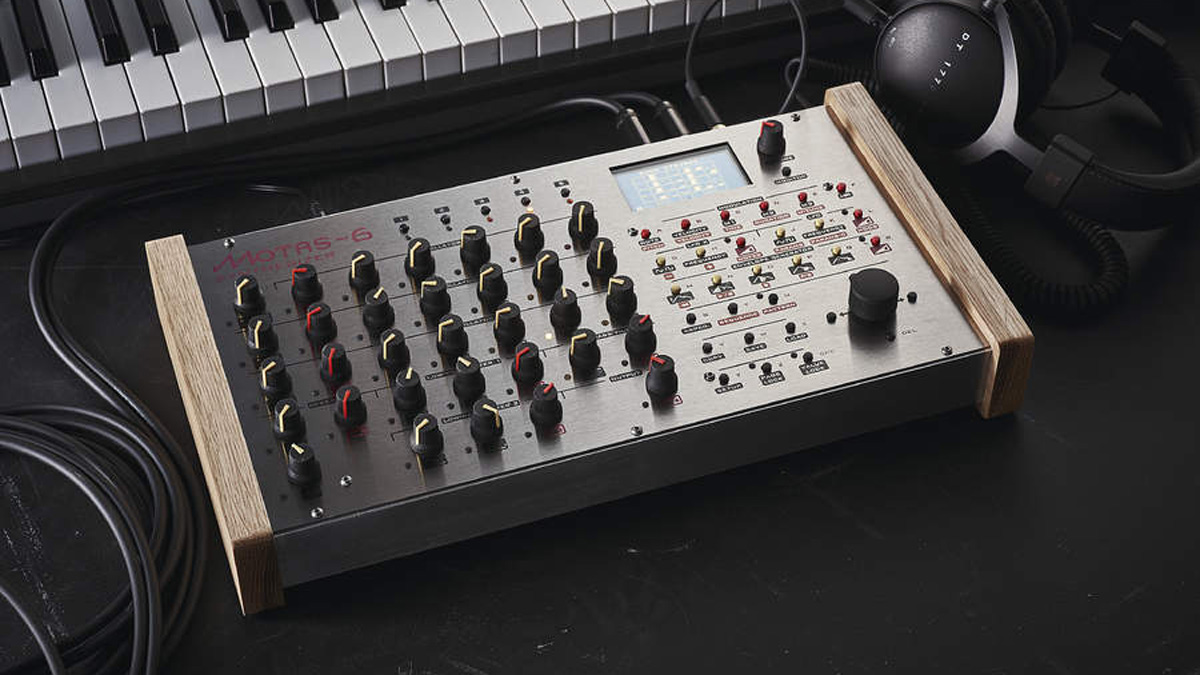MusicRadar Verdict
The Motas-6 is neither cheap nor immediately intuitive, but it is extremely powerful and boasts some very interesting features.
Pros
- +
All-analogue signal path.
- +
Lots of great interfacing options.
Cons
- -
The range of routing and modulation options can be quite bewildering when you first start.
MusicRadar's got your back
Motas is new to commercial synthesis, and the Motas-6, a three-oscillator, dual-filter, monophonic analogue synth, is its first product.
What sets it apart from similar monosynths is its powerful modulation architecture that offers an LFO and Envelope Generator (EG) for each parameter, as well as those for broader global control duties. Motas-6 is the brainchild of Dr Jonathan Hayes, who’s been experimenting with synth design since the ’90s. The name comes from his earliest experiments using OTA chips, hence: (M)onophonic (O)perational (T)ransconductance (A)mpli er (S)ynthesizer.
Delving inside the Motas-6 you’ll find many LM13700 chips, which are dual-channel updates of an IC dating from the late ’60s. These form the building blocks for creating oscillators, filters and other analogue sound generation circuits. However, while the synth has a fully analogue signal path, it combines this with a sophisticated digital control system that can be easily updated via a firmware upload.
Oscillator 1 outputs triangle, sawtooth and square/pulse waveforms simultaneously - each with their own level control. Additionally, the pulse width can be adjusted, or modulated for PWM. Oscillator 2 has a similar set of three waveforms, though this time, the pulse width parameter is replaced by ‘sub level’, which lets you dial in a (square wave) sub-oscillator an octave below. It’s also possible to modulate the phase of the triangle and saw waves from the triangle wave of Oscillator 1.
This is similar to frequency modulation, and it’s great for creating clangorous sounds. Both Oscillators 1 and 2 feature hard-sync options that expand their sonic capabilities further. Oscillator 3 is different again - dropping the sub, keeping phase modulation, and regaining a pulse width control. Master pitch and individual pitch offsets allow tuning of the oscillators over a huge range. The latest firmware also brought interesting tuning options that let the synth respond to simultaneous key presses in ways that facilitate paraphonic playback.

There’s a lot going on here before you even delve into modulation and the filter section. As well as the pitched sources, you’ll find a noise generator with both white and pink flavours, plus external audio input. When nothing is plugged-in, the Motas enables an internal feedback loop for further tonal variation.
There are three very flexible filter sections on the Motas-6, each with its own character. LPF-1 is a low-pass filter with a configurable input path that outputs multiple slopes (from one to six poles) providing anything from gentle (6dB/oct) to extreme (36dB/octave) settings. Self-resonance is possible, and you can even select the source of the resonance feedback signal. LPF-2 is based on the filter design of Roland’s TB-303, and again, it offers a range of input sources. The remaining high-pass filter is a fixed two-pole (12dB/oct) design. The output stage, not wishing to be outdone, features three different clipping circuits that can be combined in diverse ways. Setting up a simple sawtooth wave filtered by the LPF-2 at maximum resonance gives you a good idea of what flavours can be achieved here.
The routing and output options allow you to create an array of parallel, series or hybrid signal paths, going much further than most non-modular designs, but things get even more flexible once you dive into parameter modulation. As well as the usual range of global envelope generators (EGs), LFOs and note-based sources (all of which are freely assignable), the Motas-6 provides a dedicated EG and LFO for every knob-based parameter.
As we hit the press, a software editor (for Windows/ Linux) was made available. Although this mainly reflects the look and feel of the front panel, it does make editing easier, especially where there are multiple options for a single parameter (such as LFO shape). While it’d be nice to be able to visualise all envelope generators and LFOs simultaneously, the sheer amount of screen real estate required could make this tricky to achieve. Nonetheless, the current editor - that also includes patch management capabilities - is most welcome, and shows a real dedication to improving the user experience.
Thirty seven LFOs and EGs might seem greedy, but even here the options extend to numerous triggering modes, response curves and waveshapes. Jon Hayes has clearly put an immense effort into making the Motas-6 as fully-featured as possible. Plus, he was so responsive to user input that within only days of my making a suggestion regarding note priorities and trigger modes, he updated the firmware to incorporate them.
This flexibility does, however, come at a price. Though the knobs and onscreen feedback provide some help in understanding patch editing and creation, this synth can be a tricky beast to tame. The excellent manual, however, provides a clear description of all the synth’s parameters, and is updated regularly.
Ultimately, the Motas-6 is an immensely powerful standalone monophonic synthesiser that has the ability to go into all kinds of interesting sonic territory. Modular systems offer flexibility, but by their very nature do not offer much in the way of parameter recall or parameter automation. Motas Electronics should be praised for their dedication in creating such an interesting piece of sonic hardware. While there are many cheaper synths, few offer the depth of programming on offer here.
“A synthesizer that is both easy to use and fun to play whilst maintaining a decent degree of programming depth and flexibility”: PWM Mantis review
“I feel like that song had everything we needed to come back with”: Bring Me The Horizon’s Lee Malia on Shadow Moses, its riff and the secrets behind its tone, and why it was the right anthem at the right time
“I said, ‘Are we sure we can write a song about death?’”: The story of Mike + The Mechanics' classic No.1 The Living Years










